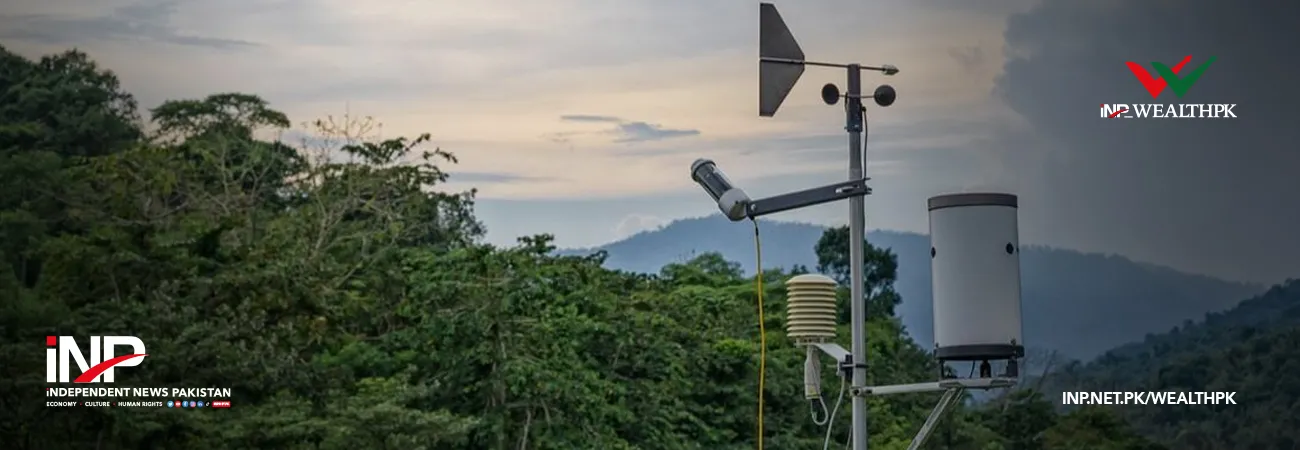INP-WealthPk
Farooq Awan
The State Bank of Pakistan (SBP) has projected a continuation of macroeconomic stability into fiscal year 2025-26, supported by cautious monetary policy, fiscal discipline, and structural reforms under the IMF program, but warned that flood-related damages and global trade tensions could pose fresh challenges to growth and inflation.

According to the central bank’s Annual Report 2024-25, Pakistan entered the new fiscal year with stable fundamentals: inflation at an eight-year low, a current-account surplus, and rising foreign-exchange reserves. These achievements restored investor confidence and led to upgrades in Pakistan’s credit rating by all three major international agencies between April and August 2025. The SBP said that macroeconomic stability and a revival of business sentiment provided a solid base for further recovery in FY26.
Real GDP growth is projected to remain close to the lower end of the earlier projected range of 3.25 to 4.25 percent. The SBP explained that while monetary easing and higher development spending would continue to support activity, widespread floods in Punjab and Khyber Pakhtunkhwa had damaged crops, infrastructure, and supply chains, posing downside risks. The losses to rice, cotton, maize, and sugarcane cultivation could dampen overall agricultural output despite expectations of better Rabi yields.
The report said that post-flood reconstruction efforts and planned increases in public investment are likely to boost the construction and allied sectors. It added that lagged effects of the significant reduction in policy rate would sustain momentum in consumption and private investment. Fiscal consolidation will continue, with the deficit expected to remain between 3.8 and 4.8 percent of GDP, supported by ongoing tax-reform measures and increased documentation of the economy.
On the external front, exports are forecast between US$32 and 33 billion, while imports are expected in the range of US$63 to 65 billion, reflecting higher import demand for reconstruction materials and agricultural commodities. Workers’ remittances are projected at US$39 to 40 billion, maintaining the strong momentum observed in FY25. The SBP anticipates that the current-account deficit will remain contained within 0 to 1 percent of GDP, ensuring stability in the exchange rate and reserves.
However, inflation is expected to rise temporarily in the second half of FY26 due to the phasing-out of base effects and adjustments in gas and electricity tariffs. The SBP projects average CPI inflation in the 5 to 7 percent range but warns that food prices could come under pressure because of flood-related shortages of perishable items. The report stated that restrained domestic demand, stable global commodity prices, and a benign external outlook would help contain underlying inflationary pressures.
The State Bank cautioned that the outlook is subject to multiple risks, including uncertainty about global trade policies, geopolitical tensions, and volatility in international energy markets. It said that these factors could affect exports, remittances, and inflation dynamics. Domestically, the scale and speed of reconstruction after the floods will determine the extent of recovery in agriculture and infrastructure.
The report emphasized that maintaining reform momentum under the IMF Extended Fund Facility is critical for consolidating recent gains. It said that consistent fiscal discipline, governance reforms in public enterprises, and energy-sector restructuring would strengthen resilience and reduce debt vulnerabilities. The SBP added that continued coordination between fiscal and monetary authorities remains essential to sustain macroeconomic stability.
In its concluding assessment, the central bank stated that Pakistan had entered FY26 in a far stronger position than a year earlier, with reduced vulnerabilities and improved confidence. However, it warned that the challenge now lies in preserving these achievements while addressing structural bottlenecks. It called on policymakers to leverage the current period of stability to fast-track reforms in taxation, energy, and agriculture—emphasizing that sustained productivity growth is essential to placing Pakistan on a stronger, more resilient economic trajectory.
Credit: INP-WealthPk













